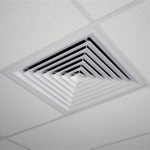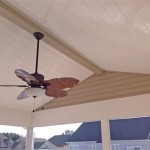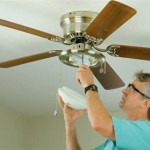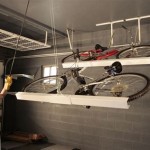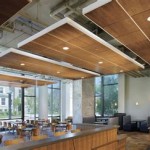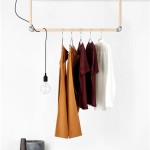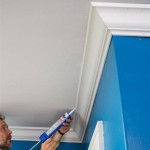Types of Ceiling Texture: A Visual Guide
Ceiling texture, also known as drywall texture, is a material applied to ceilings to create a non-uniform surface. This technique is primarily used to conceal imperfections in the drywall, offering a cost-effective alternative to achieving a perfectly smooth finish. Beyond its functional purpose, ceiling texture adds visual interest and character to a room. There are numerous types of ceiling texture, each producing a distinct aesthetic. Understanding these various options allows homeowners and contractors to select the most appropriate texture for a given space, considering factors such as the desired style, the size of the room, and the existing architectural details.
The application of ceiling texture typically involves using a specialized tool, such as a hopper gun, to spray the material onto the ceiling. The texture material itself is usually a mixture of drywall compound, water, and, in some cases, additives like sand or perlite. The consistency of the mixture, the nozzle size of the spray gun, and the application technique all contribute to the final appearance of the texture. While some textures are relatively simple to apply, others require considerable skill and experience to achieve a consistent and aesthetically pleasing result.
The choice of ceiling texture can significantly impact the overall ambiance of a room. A heavily textured ceiling, for example, can create a more rustic or traditional feel, while a lightly textured ceiling can provide a more modern and subtle look. Furthermore, the texture can affect the way light is reflected within the room, influencing its brightness and perceived size. When selecting a ceiling texture, it's crucial to consider the existing décor, the intended use of the room, and the desired overall aesthetic.
Popcorn Texture (Acoustic Texture)
Popcorn texture, also referred to as acoustic texture, is one of the most recognizable and historically prevalent types of ceiling texture. It is characterized by its raised, bumpy surface, resembling popcorn kernels. This texture was widely used from the 1950s through the 1980s due to its sound-dampening properties and its ability to effectively conceal imperfections in the drywall. The material used for popcorn texture typically consists of a mixture of drywall compound and polystyrene or vermiculite particles, which contribute to its distinctive appearance and acoustic performance.
However, popcorn texture is now less favored due to several factors. One significant concern is the potential presence of asbestos in older applications. Asbestos, a known carcinogen, was commonly added to popcorn texture for its fire-resistant properties. If a home constructed before the 1980s has popcorn ceilings, it is crucial to have the texture tested for asbestos before any renovation or removal work is undertaken. Removal of asbestos-containing popcorn texture requires specialized equipment and procedures to prevent the release of harmful fibers into the air.
Furthermore, popcorn texture is often considered dated and visually unappealing by contemporary standards. Its rough surface tends to collect dust and is difficult to clean. Repairing damaged popcorn texture can also be challenging, as it can be difficult to match the existing texture precisely. While popcorn texture is still used in some applications, such as soundproofing home theaters or recording studios, it is generally being replaced by more modern and aesthetically pleasing texture options.
From a visual perspective, popcorn texture ceilings are generally perceived as visually dense and can make a room feel smaller and lower. The high level of texture obscures any ceiling details and can contribute to a less refined aesthetic. The application process typically involves spraying the texture onto the ceiling with a hopper gun. The thickness of the application and the size of the particles used influence the final appearance of the texture. Due to these factors, proper application is crucial for avoiding an uneven or visually distracting finish.
Orange Peel Texture
Orange peel texture is another commonly used type of ceiling texture, named for its resemblance to the surface of an orange. It is characterized by a subtle, slightly bumpy texture that is less pronounced than popcorn texture. Orange peel texture is typically created by spraying a thin layer of drywall compound onto the ceiling using a hopper gun. The consistency of the compound and the air pressure of the sprayer determine the size and density of the bumps.
Orange peel texture is often favored for its versatility and its ability to blend well with a variety of architectural styles. It is effective at concealing minor imperfections in the drywall without being overly conspicuous. The texture is relatively easy to apply and repair, making it a popular choice for both professional contractors and DIY homeowners. The application typically requires a single coat of texture, followed by priming and painting once the texture has dried.
Visually, orange peel texture is more subtle and refined than popcorn texture. It adds a touch of visual interest to the ceiling without overwhelming the room. The texture can help to diffuse light, reducing glare and creating a more comfortable ambiance. Orange peel texture is available in a variety of densities, ranging from a light splatter to a more pronounced texture. The choice of density depends on the desired aesthetic and the extent to which the texture needs to conceal imperfections.
The application process for orange peel texture requires careful attention to detail. The drywall compound must be properly mixed to achieve the desired consistency. The spray gun must be adjusted to deliver a consistent and even spray pattern. Overlapping passes can lead to an uneven texture, while insufficient coverage can result in visible imperfections. Practicing on a scrap piece of drywall before applying the texture to the ceiling is recommended to ensure a satisfactory result. Subsequent to the texturing, a primer should be applied followed by at least two coats of quality ceiling paint.
Knockdown Texture
Knockdown texture is a decorative ceiling texture that creates a unique, patterned effect. It is applied in two stages: first, a layer of drywall compound is sprayed onto the ceiling, creating a random splatter pattern. Then, while the compound is still wet, a wide drywall knife or trowel is used to "knock down" the raised peaks of the splatter, creating a flattened, textured surface. The final appearance of knockdown texture can vary depending on the technique used and the amount of pressure applied during the knockdown process.
Knockdown texture offers a more contemporary and visually interesting alternative to both popcorn and orange peel texture. It is particularly well-suited for modern and transitional interiors. The texture adds depth and dimension to the ceiling, creating a sense of visual movement. It is also effective at concealing imperfections in the drywall, although not as aggressively as popcorn texture.
The application of knockdown texture requires a higher level of skill and experience than orange peel texture. The timing of the knockdown process is critical: if the compound is too wet, it will smear; if it is too dry, it will be difficult to knock down. The consistency of the compound and the pressure applied during the knockdown process also affect the final appearance of the texture. Different knockdown patterns can be created by varying the angle and direction of the drywall knife or trowel.
Visually, knockdown texture offers a more sophisticated and visually appealing look compared to more basic textures. The textured patterns offer a refined look. The choice of knockdown pattern depends on the desired aesthetic and the overall style of the room. As with other textures, the application requires the ceiling to be primed and painted after the texture has dried completely
Swirl Texture
Swirl texture, also known as skip-trowel texture, is a hand-applied ceiling texture characterized by its distinctive swirling patterns. This texture is created by applying drywall compound to the ceiling and then using a trowel or other tool to create circular or semi-circular swirls in the wet compound. The size and pattern of the swirls can be varied to create different visual effects.
Swirl texture is often used to add a touch of elegance and sophistication to a room. It is particularly well-suited for formal living rooms, dining rooms, and entryways. The texture can create a sense of movement and visual interest, adding depth and dimension to the ceiling. It is also effective at concealing imperfections in the drywall, although the effectiveness depends on the size and density of the swirls.
The application of swirl texture requires a considerable amount of skill and artistry. The swirls must be created in a consistent and uniform manner to avoid an uneven or chaotic appearance. The consistency of the drywall compound is also crucial: it must be thick enough to hold the shape of the swirls, but not so thick that it is difficult to work with. Practicing on a scrap piece of drywall is essential before applying the texture to the ceiling.
From a visual perspective, swirl texture adds a unique and handcrafted look to the ceiling. The swirling patterns can be customized to complement the overall style of the room. The texture is best applied by experienced professionals to ensure a high-quality and visually appealing result. Often, a primer and paint are required after drying. The specific type of primer and paint depends on the specific compound used to create the swirl texture.
Smooth Ceiling (No Texture)
A smooth ceiling, also known as a level 5 finish, represents the absence of any applied texture. This finish requires meticulous preparation and application techniques to achieve a perfectly flat and flawless surface. It involves multiple layers of drywall compound, careful sanding, and precise attention to detail to eliminate any imperfections or visible joints. A smooth ceiling is often considered the most modern and sophisticated option, providing a clean and minimalist aesthetic.
While a smooth ceiling offers a sleek and contemporary look, it also requires the highest level of skill and effort to achieve. Any imperfections in the drywall will be readily visible, making it essential to ensure that the drywall is properly installed and taped. The sanding process must be done carefully to avoid creating dust or damaging the surface. Several coats of primer and paint are typically required to achieve a uniform and flawless finish.
Visually, a smooth ceiling maximizes the sense of space and light in a room. It creates a clean and uncluttered look that is well-suited for modern and contemporary interiors. Smooth ceilings are often preferred in minimalist designs, where the focus is on clean lines and simple forms. The absence of texture allows the eye to move freely around the room, creating a sense of openness and fluidity.
The application process for a smooth ceiling is significantly more rigorous than for textured ceilings. Each stage, from drywall installation to the final coat of paint, demands precision and meticulousness. The result, however, is a sleek and modern ceiling that enhances the overall aesthetic of the space. This option is typically more expensive due to increased labor time.

14 Fresh Modern Ceiling Texture Ideas For Your Home Northern Feeling

20 Diffe Ceiling Texture Types For Your Home Interior

20 Ceiling Texture Types To Know For Dummies Interior Design Wall Textured Walls

The Top 15 Ceiling Texture Types For Easy Selection

21 Unique Ceiling Texture Types To Elevate Your Interiors Cozycottagecute

21 Unique Ceiling Texture Types To Elevate Your Interiors Cozycottagecute

The Diffe Types Of Ceiling Textures You Need To Know About Surepro Painting

11 Best Ceiling Texture Types For 2024 Pros Cons Decor Home Ideas

Ceiling Texture Types How To Choose Drywall Finish For Your

20 Diffe Ceiling Texture Types For Your Home Interior Textured Paint
Related Posts

